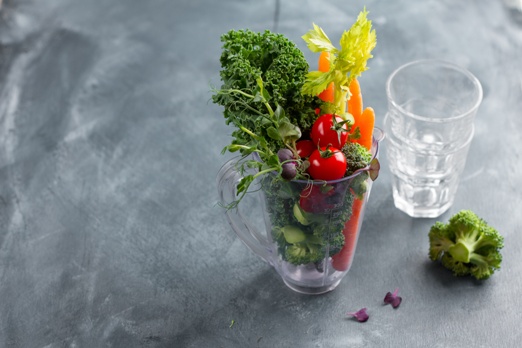
Podcast: Play in new window | Download
In this podcast I’ll be exploring Juicing and Blending:
- I’ll explain why consuming juices and smoothies are important for happiness and health
- I’ll talk about the differences and the pros and cons between juicing and blending vegetables and fruits
- Finally, I’ll share tips on how to turn your juices and smoothies into a healing elixir
CLICK HERE TO LEARN WHAT ARE THE BEST FOODS TO GET YOU LEAN
Everyone knows that vegetables and fruits are packed-full of phytonutrients, plant chemicals that have powerful medicinal and healing effects in your body. Plant power fuels and nourishes animal life on this planet. Without the antioxidant, anti-inflammatory, antimicrobial, and immune-boosting benefits you get from consuming plant matter it becomes very difficult, but not impossible, just hard to give your body the nutritional, energetical, and informational support it needs to thrive.
Unless you live in the North and South poles where you’re exposed to cold with its own unique healing powers and are consuming a lot of nutritionally dense rich blubberous animal fats and their offal then plant foods are going to be a necessity in your diet.
Juicing and blending your vegetables and fruits into juices and smoothies are an excellent and simple way to get more plant medicine into your diet.
When you juice you’re making juices and when you blend you’re making smoothies. Juicing is very different to blending, which makes juices very different to smoothies.
Plants are made up of mostly water much like your own body and also a carbohydrate known as fibre. Fibre is indigestible by your body’s digestive system. This fibre though it is the perfect food for the trillions of microorganisms that live in your gut, in your digestive tract and your gut microbiome plays a huge role in your digestion and in keeping your immune system running optimally.
Fibre is the difference between juicing vegetables and fruits into juices verses blending them into smoothies. When you juice, using a juicer obviously, what you’re doing is separating the fibrous plant material from the water and this water contains a majority of the phytonutrients. This leaves you with a very watery drink and a lot of fibre leftover. When you blend, using a blender obviously, what you’re doing here is pulverising, chopping, mashing 100% of the plant material fibre and all leaving you with a thick drink.
There are benefits and drawbacks to both juicing and blending.
The primary benefit to having juices and smoothies is that they are a very simple, nutritious and delicious way to increase your consumption of vegetables. Not everyone can manage to eat 3 to 9 cups of vegetables a day, but you can easily get 3 cups of a variety of vegetables in one juice or smoothie.
For example in my green smoothie that I have for dinner most nights I put in a quarter cup of parsley. You have probably seen a tiny pinch of parsley used mainly as a garnish and sure that tiny amount tastes okay, but can you imagine eating 4 tablespoons worth of chopped parsley? Maybe spread out evenly over a day, but for me I like getting my parsley dose in one hit and it’s so much easier and tastier mixed into a smoothie.
Now the main benefit to juicing and drinking juices is that they are an easily digested and quickly absorbed source of nutrition and energy. For people with digestive issues, energy issues, and for those who are severely malnourished drinking green juices will be easier on your body allowing your body to absorb more of the nutrients in that juice. It takes about 20 minutes for a juice to be fully digested and absorbed compared to a few hours for a full-blown meal.
Also because your body doesn’t need to spend a lot of energy digesting your juice it will have more energy that can be used elsewhere such as for repairing damaged tissues, increasing detoxification processes, and producing more neurotransmitters and sex hormones.
The thing is the main benefit to juicing, easy digestion and quick absorption, is also one of its drawbacks. But this all depends on what you’re actually juicing. Fruit juices are not healing drinks like green juices are. This is because of the high amount of fruit sugars present in fruits. Remember juicing extracts the water and the nutrients and separates them from the fibre and fibre helps slow down the release of sugar from your gut into your bloodstream. Without the fibre in the juice that sugar is going to hit your system very quick and very hard causing a massive insulin response which is something you don’t want to happen on a regular basis. Listen to the previous podcast I did on the blood sugar rollercoaster for more info on that.
Now you may be thinking to yourself, but it’s natural sugar from real food. Whether sugar is found naturally in real food or refined and added by the spoonful once sugar hits your digestive tract your body doesn’t know the difference. Sugar is sugar. Except if there’s fibre present then your body and your gut microorganisms will deal with that sugar differently. Not just fibre, but fats and acids help with this as well, but I’ll talk more about those later. This is why eating fruits in their whole intact form is a lot better for you than fruit juices and it doesn’t matter if the juices are bought from the shop or made fresh at home. Sugar without fibre is processed sugar to your body.
The other downside to drinking juices is that you cannot extract all the water and nutrients bound to the fibre. Even with the slowest spinning masticating juicers you will always be missing out on nutrients when you juice.
Final drawback to juicing I’ll mention is when you’re using a centrifugal juicer, one that spins at high-speed in the thousands of RPMs or revolutions per minute, a centrifugal juicer will suck in more oxygen which creates more oxidation or damage to the nutrients. Not only do high-speed juicers cause damage, but they also do not extract as much juice as slow masticating juicers do. Even if you do use a masticating juicer that can spin as low as 65 RPMs, as I talked about before you will not be able to extract all the water and nutrients from the fibre.
Moving onto smoothies.
The good thing about smoothies, besides being a simple way to increase your vegetable consumption, is that you are eating the whole food, the entire vegetable and fruit meaning you get the fibre, the nutrients, the water, the whole deal. You are not missing out on anything that may be lost when you juice. This means that even if you do add some fruit to your blended smoothies the release of sugar into your bloodstream will be a lot slower than fruit that’s been juiced.
There is a similar drawback to blending just as there is in juicing if your smoothie is made up mostly or 100% of fruit. For people with metabolic disorders meaning they are unable to digest and metabolise sugar properly due to hormonal imbalances, a fruit smoothie will be doing more harm than healing and can be just as bad as a fruit juice.
Last downside to blending again similar to juicing is that these blenders spin at super high speeds that will cause damage both physically by the blades and oxidatively by sucking in more oxygen.
Alright so how do you make healing juices and smoothies?
First things first – you got to reduce the sugar hit. When designing a juice or smoothie for healing, obviously you don’t want to add any additional sweeteners artificial or natural including maple syrup and honey due to sugars ability to upset your hormonal rhythms and to suppress your immune system.
When it comes to juices you want to be drinking healing green juices with little to no fruit added. I like using kale, cucumber, celery, and some ginger as a base for all my green juices. From here you can add whatever else you like. I recommend adding in some herbs as pound for pound herbs are more nutritionally dense than their larger plant cousins.
The only fruits I recommend for juicing are lemons, limes, kiwifruit, and a green apple. The acidity in lemon and lime help with your digestion and blood sugar balance. The gelatinous nature and compounds in kiwi also help with digestion and green apples are a bit of a compromise when it comes to taste. If you find green juices too bitter then adding one green apple including the apple seeds, especially the apple seeds, can help make the juice sweeter without being too heavy in fruit sugars, with the added bonus of having the low dose of cyanide that come from the apple seeds. No this cyanide isn’t going to kill you, but it’s a great cancer regulator. By that I mean cancer cells love sugar. So when you eat your juice (yes I said eat, not drink) a lot of the sugars will be picked up by cancer cells. The cyanide will piggyback on this metabolism and will also be taken up by those cancerous cells causing them to do what mainstream medicine fails to do – the cyanide causes cancerous cells to die.
Okay other vegetables to improve on taste while at the same time improve healing are carrots, beetroot, and orange kumara or orange sweet potato. The cool thing about the sweet potato is not only does it give you a bunch of beta-carotene and a touch of sweetness, but it also gives the juice a creamy texture. If a spoonful of sugar helps the medicine go down, then a bit of lemon juice and sweet potato helps the green juice go down, no doubt about it.
To help lower the glycaemic response, the rate at which sugar gets released into your bloodstream, you can mix in some raw unfiltered apple cider vinegar with the mother. This means apple cider vinegar that hasn’t been pasteurised and that looks murky. The bottle should not be clear looking. You should see the mother, which is a collection of friendly bacteria and other beneficial compounds, you should see the mother at the bottom of the bottle so be sure to shake it up before mixing into your juice.
Another thing you want to do when consuming green juices is to eat some fat with your juice. I recommend eating a spoonful of coconut oil or extra-virgin olive oil right before or right after your juice. There are a lot of fat-soluble micronutrients in vegetables and they need fat to be absorbed during digestion. So by eating some fat with your juice you can increase the amount of nutrients your body absorbs and assimilates.
Final tip for designing a very healing juice is that you must use a slow masticating horizontal juicer. A high-speed juicer is destroying a majority of the nutrients wasting a lot of that precious plant medicine. A vertical masticating juicer is much better and does more than just juice. It can make nut milks and sorbets as well. The difference between a vertical and horizontal juicer is that while the vertical is better for getting more juice out of fruits it doesn’t do a good job of extracting water and nutrients from non-starchy vegetables, especially green leafy vegetables. Now a horizontal masticating juicer can also make nut milks and sorbets like the vertical one and it is the best juicer for healing as it gets more medicine out of vegetables. If you have the cash go for a juicer with twin juicing abilities to get more out of your vegetables. Or you can simply put the fibre or leftover pulp back into your juicer a second time to get even more medicine out of the plants.
I do have a tip relating to juicing, but not to do with the juice itself. The pulp, the fibre that’s leftover, don’t toss this in the trash. Use it in your compost for your garden or dehydrate the fibre to make healthy crackers.
Remember the base of the green juice I mentioned earlier and play around and make your own recipes from there.
When it comes to healing green smoothies similar guidelines apply.
I use as a liquid base for all my green smoothies one cup of water, a pinch of sea salt, a tablespoon of apple cider vinegar or lemon juice, and a tablespoon of extra-virgin coconut oil. You can use any healthful animal or fruit fat you like and any liquid you like so long as there’s no added sweeteners and chemicals.
Coconut milk and unsweetened almond milk are okay substitutes for water, but even better than water (yes better than water if you can tolerate dairy that is) is raw yoghurt, specifically raw milk kefir. This gives your body more beneficial microorganisms or probiotics. But wait there’s more and something even better than water and kefir for healing (if you tolerate monosodium glutamate or MSG that is) and that’s bone broth made from bones from happy and healthy animals free to roam outdoors and eating their natural species appropriate diet.
“A good broth can raise the dead”
Is a South American proverb and by using bone broth in your healing green smoothie you will increase your body’s innate ability to heal exponentially. If you don’t have any bone broth handy you can always add a tablespoon or two of gelatine or collagen which have similar health benefits to bone broth including repairing your gut and improving joint and skin health.
You can add whatever non-starchy green-leafy cruciferous coloured sulphurous vegetables you want to your smoothie, but when it comes to fruit I would stick to berries and the juice of lemons or limes to keep your smoothie a healing drink. Celery I include as a base in all of my green smoothies. Celery helps normalise blood pressure and aids with digestion. Adding in herbs and spices is a must for the best tasting and healing green smoothie. Parsley and cinnamon are my go to herb and spice. Parsley is a great blood purifier and it reduces body odour and cinnamon will improve overall flavour and help stabilise blood sugar levels.
Oh and when I say green here, in terms of green juice or green smoothie, I don’t just mean literally green, I also mean a high vegetable low fruit drink. So even if your juice or smoothie isn’t the colour green it’s green in my book if there’s not high amounts of fruit and sugar in it.
A couple of taste and healing combinations I’ve found too good to be true when it comes to smoothies are avocado, a tiny amount of red onion, and coriander aka cilantro aka Chinese parsley. Think a guacamole drink. Also raw cacao powder with mint leaves. Yep a mint chocolate drink and when you add in an avocado to your mint chocolate you get a mint chocolate mousse. Mmm hmm, tasty!
Another taste enhancer, well really a texture enhancer is to add cacao nibs or coconut flakes to your smoothie near the end of blending to give it some crunch or sprinkle some crushed nuts or seeds on top of your drink after blending. And by the way peanuts are legumes, not nuts.
One final blending tip is to add a quarter to half a teaspoon of powdered vitamin C to your smoothie. This acts as an antioxidant and protects against oxidative damage that happens when you blend at high-speeds. Also it gives a little bit of tang to your smoothie.
If you really cannot do without fruits or starchy vegetables in your green drinks then you can still make these healing drinks by consuming them post workout. Your muscle cells are more sensitive to insulin after intense exercise so by timing the intake of your sweet green drink after a workout you reduce the impact the sugar will have on your body.
Final overall tip and this is an absolute requirement when it comes to turning a typical green drink into a healing elixir and I mentioned this earlier and that is you must eat your juice or smoothie, not drink it. Meaning you must chew the watery or thick liquid in your mouth for a few seconds, get your digestive enzyme containing saliva all up in that drink before you swallow. Chewing is one of the early stages of digestion, which I talked about back in episode 9, and without this crucial step you’re literally wasting most of the beneficial plant medicine in your drink as your body will quickly eliminate whatever isn’t covered in your digestive enzymes when it hits your digestive tract. Chewing your green drink will turn it into a more potent healing elixir. So no straws please. Drink it straight from the mug or cup.
I’ll put a couple of links to a juicer and blender I recommend in the blog post for this episode.
Look there’s no limits to how you make your juice or smoothie really. It’s up to you. Whatever floats your boat and makes your taste buds sing. However, there are limits to making your green drink a healing drink.
So remember keep the sugar low, add in some animal or fruit fats, move before you eat, and above all else listen to your body.
“If your green drink makes you feel stink or look green or pink, it’s time to rethink your green drink.”
Okay so which is better for healing? Juicing or blending? Well it depends on what you put in your drink, and also how and when you eat it.
Links and Resources
- WGP 040: Riding the Blood Sugar Roller Coaster to Hormone Hell
- WGP 009: Digestion – How to Eat Real Food
- Optimum Slow Juicer
- Optimum High Speed Vortex Blender
- Omega Horizontal Masticating Juicer
Please leave a 5-star iTunes review for the Whole Guidance Podcast
Podcast: Play in new window | Download
Subscribe: iTunes | Stitcher Radio | Android | RSS
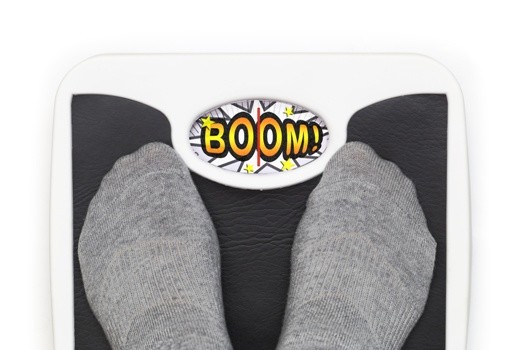
Podcast: Play in new window | Download
In this podcast I’ll be exploring the Best Ways to Measure Your Health:
- I’ll explain why tracking your health progress is crucial to reaching your health goals
- I’ll talk about how your body weight is really a poor measure of health
- Finally, I’ll give you 5 different health tracking techniques you can use to better manage your health
CLICK HERE TO LEARN WHAT ARE THE BEST FOODS TO GET YOU LEAN
Many people set health goals and fail to reach them, why? Two big reasons come to mind. First one is you need to know why you are doing what it is you are doing. Many people fail to reach health goals because they don’t have a big enough why, a big enough reason to push through plateaus and obstacles that will most definitely show up. Having a dream gives you that why; it gives you direction and inspiration to push through right to the end.
Second big reason people fail to meet health goals is that they do not track their health progress. Just as having a dream and setting a health goal is important in that it gives you direction and something to move toward and gives you that drive and that push, tracking your health progress is like signs and indicators that keep you on the best path toward your dream. Tracking and measuring your health is really important in that it gives you clear signs when things are working for you and when things are not.
If you suffer from chronic weight issues, whether you’re overweight or underweight, than the bathroom scale is probably your most prized and most despised earthly possession and why wouldn’t it be. You have been told that body weight is a very important indicator for health. Let explain how this is not 100% accurate.
Your body weight is made up of muscle, bone, fat, cartilage, bodily fluids of several types, and of course water. Whenever you stand on a scale and measure your weight you are weighing the totality of all of these things. This is where the Body Mass Index or BMI fails as a health measurement. The BMI is a measure of body fat (supposedly) based on your weight in relation to your height. If your BMI comes out at 18.5-24.9 you are labelled as having a normal weight. If its 25-29.9 you are labelled overweight. Over 30 and you’re obese.
Now I want you to think of the Terminator himself Arnold Schwarzenegger. During his bodybuilding days his body weight was around 107 kg or 235 lbs and he’s 6’2”. Arnold’s BMI in his prime works out to be 30.2. Meaning according to body weight and BMI that Conan, the Commando himself who helped Red Sonja save the world and who single-handedly took out the Predator is an obese fat hunk of human flesh! Remember over 30 is obese. Well of course that’s not true as Arnold’s body fat percentage when he was competing was only about 5-7% and he was in reality a mass of lean muscle and a chiselled piece of human art.
The bathroom scale is not giving you an accurate number for health. It’s giving you a number, but that number depends on so many things. Is that scale number made up of mostly muscle which is a lot more dense and heavier and healthier than fat? Or is it bone mass? Is that scale number mostly fat?
Imagine you spend a whole month off the sugars and junk food, you’ve quit smoking, and you’re now walking more and doing some resistance training. You start out at 70 kg and after 4 weeks you see on the scale the same 70 kg. Your initial reaction may be shock, horror, and confusion, but if you understand that getting off the sugars means you’re not holding onto as much water as before and that eating more real food and not smoking and doing some weight training can actually build muscle and bone and cause fat cells to empty out and die then maybe that number is a really good indication of how you’ve been doing that month. You’ve burnt off the fat and you’ve built up some bone and muscle.
This is why body weight is not a good measurement to track and using a scale is a waste of time really. It’s difficult to get a real sense of what’s happening with your body and with your health overall when you rely solely on that number you get from the scale.
Let me share 5 more effective ways to track your health progress. These techniques do not need any fancy equipment and are simple and easy to do and they will give you a more accurate measure of your health than a body weight number on a scale ever could.
First technique is measuring your waist-to-hip ratio. This gives you a better measurement of your body composition. All you need is a tape measure and a calculator. Note down your waist circumference (by putting the tape around your waist over your belly button) and your hips circumference (by measuring at the widest part of your hips). Divide your waist measurement by your hips and you will have your waist-to-hip ratio. An ideal number for men is 0.8 and for women is 0.7. Less than 0.95 for men and less than 0.8 for women puts you in the low risk disease group. Above these numbers, .95 and above for men, .8 and above for women and you move into the moderate and high risk disease groups.
Along this body composition line of thinking clothes are a great way to track progress. Are your pants or dresses starting to feel more loose or tight? If it’s tight is it due to more fat or more muscle tone? How to tell? Use a mirror and a camera. Your memory tends to be a bit biased and flaky when it comes to your body image so taking photos of your half-naked body in the mirror is a great objective assessment of your body composition over time. I suggest keeping the snaps to once a week. You can overdo tracking your health progress. We want to keep it nice and balanced so once a week taking your measurements will keep you from getting too neurotic.
Second way to track your health progress is by keeping a food and poop log. This is seriously important data you need to manage to keep on top of your health. By logging your meals, snacks, and drinks you will be able to see how well you’re keeping to your lifestyle eating plan. Remember diets are great, but healthy eating is part of your life not separate from it so healthy eating shouldn’t be something you feel forced into doing, but something that’s as natural as breathing or brushing your teeth every day. So you can use this food log data to help track down root causes of any health issues that come up.
By logging your, logs, poop that is, and using the Bristol Stool Chart as your tool to compare your stool you can get an overall picture of your lifestyle and how healthy it really is. Your body rarely lies and if your poops are in the constipated or diarrhoea ends of the Bristol Stool Chart that means some part of your lifestyle is not working for your body and needs to be isolated and changed. Luckily you’ve been tracking your food intake so you can use this as a tool during your stool analysis.
Okay third way to track your health is to see if you can hold a 60 second plank. A plank is a position you hold horizontally on the ground where you raise your body and rest on your toes and your forearms and elbows. If you can hold a plank using good form and I’ll put a link to a video in the blog post for this episode so you can see what that looks like, if you can hold a plank for 1 minute your core strength isn’t that bad.
This fourth technique may seem easy for you young’uns out there, but it’s still a valid test and may even show up some faulty movement patterns or stiff areas of your body that you didn’t even know existed. It’s called the Sitting-Rising Test or SRT for short. This test involves sitting and rising, duh, but using only your legs. You start off with 10 points, 5 points for sitting and 5 points for rising and each time you use another body part for support like your arms or knees you lose 1 point. The SRT is measuring many things including muscle strength, bone integrity, mobility, balance, and motor coordination, but ultimately it highlights your longevity. The goal is to keep the 10 points and sit and rise without assistance. This indicates a reduced risk of death from all causes, but don’t worry if you can’t get a perfect 10. Just note down your number today and once a week or month retest and see how well your lifestyle changes are working for you.
Fifth and final tracking technique is probably the most important – logging (journaling, writing down) your thoughts, feelings, and the results you’re getting in other areas of your life. So has your thinking and your ability to focus improved? Have your moods improved or are they more stable? Has your outlook on life improved or gotten worse. How are your family and work relationships? How are your career and financial goals coming along? Have these all improved?
The first four techniques that I mentioned even if they are all showing improvements in your health in the right direction this doesn’t mean all is well in your life. Your body composition and fitness is one part of your health and your health is one part of your life.
This final way of tracking your health progress, logging how you think and feel and how you’re performing in the world really shows whether looking good in the mirror and planking yourself for days on end is really working for you or not. I mean what’s the point of having 10% body fat and being able to deadlift a car if you are secretly depressed, broke, and you have no-one else to share your health with. Health is one key to a happy life, don’t forget that and this last tracking technique brings all aspects of your life together.
Millions and I mean millions of kilos and pounds of human tissue have been lost and found over the years due to people not having a dream and not having the ability to follow that dream the simplest way possible. By using these 5 health measurements you will steer yourself toward your health goals a whole lot easier and happier than if you were to use a single number you get from a scale as your only measurement.
Archimedes, an ancient Greek mathematician, he said:
“Give me a place to stand, and I will move the world.”
Well the scale definitely isn’t the place to stand if you want to make effective long lasting change happen. So here’s to tossing out the scale and thinking that your health is tied to a single number. Your health is dependent on so much more and then some.
Links and Resources
Please leave a 5-star iTunes review for the Whole Guidance Podcast
Podcast: Play in new window | Download
Subscribe: iTunes | Stitcher Radio | Android | RSS
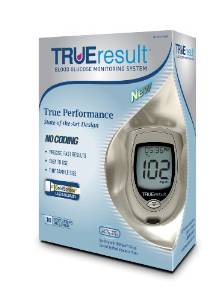
Glucose Meter / Glucometer
(view product page)
Stress is at the root of almost all chronic diseases and the biggest contributor to stress is low-level inflammation within the body. The most common cause of hidden inflammation today is the dysregulation of blood sugar/glucose levels.
There is at most one teaspoon of glucose in the blood of a healthy person. When glucose levels get too high (eg. high consumption of refined/processed sugars) or get too low (eg. from long endurance exercise) the body releases hormones that help balance sugar levels in the blood.
The more times the body is forced to balance blood glucose levels the lees effective it becomes at doing the job. Eventually the body is unable to perform this balancing act 100% of the time and this leads to inflammation, tiredness, illness, disease, and finally death.
If there is one tool that every single person whether they be suffering an illness or not could use to take control of their health it would be a glucometer.
Disclaimer: This page contains affiliate links that may provide monetary compensation to help support the Whole Guidance Vision of Creating a Happy and Healthy Planet should you make a purchase. We very much appreciate and thank you for your support.

Thermometer
(view product page)
Most people use thermometers after sickness has already taken hold as a way to measure and monitor the healing process.
Another way to use a thermometer is to measure one’s potential metabolic rate and thyroid function.
By measuring body temperature upon waking for one week and taking the average value and comparing this to a normal body temperature of 37.0°C/98.6°F you can get a good indication of whether your metabolism is downregulated (below 37.0°C) or upregulated (above 37.0°C).
If below or above normal temperature and with other correlating symptoms of disease this can help better inform a decision to visit a health practitioner for proper thyroid hormone testing.
Disclaimer: This page contains affiliate links that may provide monetary compensation to help support the Whole Guidance Vision of Creating a Happy and Healthy Planet should you make a purchase. We very much appreciate and thank you for your support.
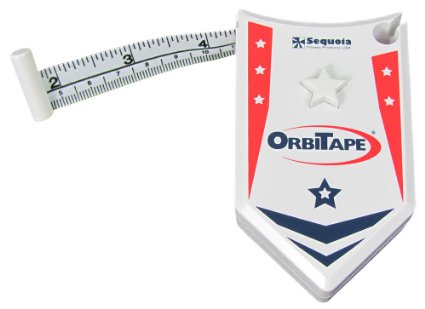
Measuring Tape
(view product page)
Measuring tape is the most basic of all biofeedback tools and is also a lot more informative than a bodyweight scale.
A bodyweight scale gives you a reading of your total bodyweight including fat, muscle, water, and bone. You may be happy to see the scale go down, but what if you lost muscle or if it turns out to be water loss only. On the other hand you may frown if the scale goes up, but what if you gained muscle or are retaining more water than usual?
A measuring tape on the other hand gives you a clearer picture on your body composition by way of being able to measure many different areas of the body. By measuring your height, hips, waist, legs, arms, and neck you can calculate whether it’s muscle or fat that is making up most of your body composition.
The best two measurements that help determine your risk for inflammation issues, diabetes, heart disease, or stroke include your height-to-waist ratio and your waist-to-hip ratio. To calculate height:waist ratio take your height in inches or centimetres and divide by your waist using the same unit of measure. To calculate waist:hip ratio take your waist in inches or centimetres and divide by your hips using the same unit of measure.
Ideally you want your ht:wst to be at least 2:1 and your wst:hp to be a maximum of 0.94:1.
Disclaimer: This page contains affiliate links that may provide monetary compensation to help support the Whole Guidance Vision of Creating a Happy and Healthy Planet should you make a purchase. We very much appreciate and thank you for your support.
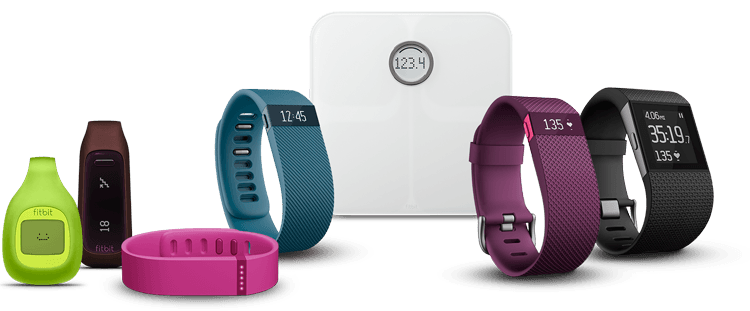
Fitbit Wireless Personal Trainer
(view product page)
Fitbit is the simplest way to get more fit during your busy life.
The Fitbit Wireless Personal Trainer tracks your full day’s steps, distance, and calories, allowing you to see how active you are and inspiring you to walk more and do more. And those small changes can add up to big results!
Fitbit can even measure how long and how well you sleep.
With free, easy-to-use online tools at Fitbit.com and new mobile apps, Fitbit lets you set goals, track your progress, and log food, weight, and other activities.
So, whether you’re looking to lose weight, continue your fitness program beyond the gym, or just get more active, Fitbit really helps you get the results you’re after.
Disclaimer: This page contains affiliate links that may provide monetary compensation to help support the Whole Guidance Vision of Creating a Happy and Healthy Planet should you make a purchase. We very much appreciate and thank you for your support.
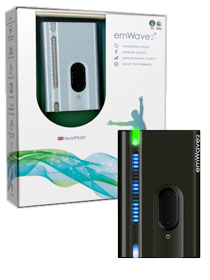
HeartMath Heart Intelligence Training
(view product page)
HeartMath is recognized as one of the world’s foremost authorities on emotional physiology, stress and optimal performance. Through their innovative technology they provide practical, scientifically validated methods that enable people to live more rewarding, healthy and productive lives personally and professionally. HeartMath have achieved global recognition for their groundbreaking products and services that have been proven to increase productivity while reducing the stress associated with living and working in this era of high-speed change.
The award winning emWave® and Inner Balance™ technology products from HeartMath offer a drug-free solution to stress, anxiety, depression, and more.
Used just a few minutes a day, this simple-to-use technology helps you transform feelings of anger, anxiety or frustration into more peace, ease and clarity.
For athletes and individuals training for health, HeartMath technology will give you a snapshot of your nervous system’s stress state indicating whether your body is ready for another hard high intensity workout or if you should take it easy with low intensity movements such as yoga, stretching, and massage.
Learn how to train your body to remain in a stress-free state even in the presence of perceived stress.
Disclaimer: This page contains affiliate links that may provide monetary compensation to help support the Whole Guidance Vision of Creating a Happy and Healthy Planet should you make a purchase. We very much appreciate and thank you for your support.
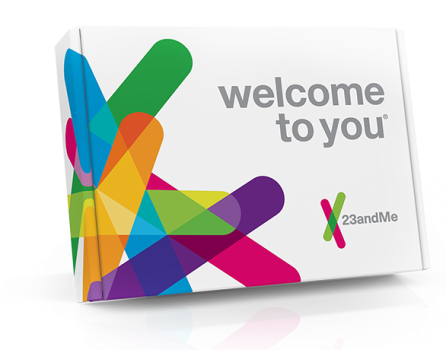
DNA Genetic Testing
(view product page)
23andMe is a DNA analysis service providing information and tools that allow you to learn about and explore your DNA. 23andMe services allow you to:
- Find out what your DNA says about you and your family
- Learn what percent of your DNA is from populations around the world
- Contact your DNA relatives across continents or across the street
- Build your family tree and enhance your experience with relatives
Along with ancestry and family information you also receive your entire genetic data in raw form with 23andMe. This gives you the option to use other online services such as Genetic Genie, Athletigen, and GeneKnot to interpret your raw data to get more information relating to potential health benefits and disease risks.
There was a time when testing your DNA and mapping your genetic code would cost 10’s of thousands of dollars. Today with the advancement of technology you can get your genome mapped for a fraction of the cost.
Disclaimer: This page contains affiliate links that may provide monetary compensation to help support the Whole Guidance Vision of Creating a Happy and Healthy Planet should you make a purchase. We very much appreciate and thank you for your support.
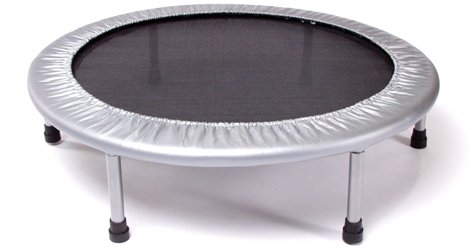
Rebounder
(view product page)
Rebounders are mini trampolines that support your body’s innate detoxification system through the act of rebounding (jumping on a mini trampoline).
Toxins are moved out of cells and transported out of the body through the lymphatic system, which is a circulatory drainage system for anything the body cannot utilise and is a major player in detoxification. The lymphatic system functions only during muscular contraction. This includes any type of movement.
Rebounding is an extremely low impact mobility/detoxification practise with no long-term adverse effects on your joints making it the best way to work your muscles and to move lymph within the body.
Disclaimer: This page contains affiliate links that may provide monetary compensation to help support the Whole Guidance Vision of Creating a Happy and Healthy Planet should you make a purchase. We very much appreciate and thank you for your support.
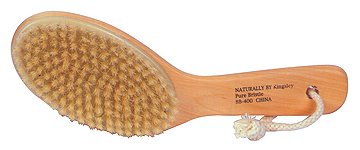
Dry Brush
(view product page)
A dry brush is a bath brush with soft, natural fibre bristles used to support the body’s innate detoxification processes.
Stroking the brush against the skin toward the direction of the heart (never away from the heart) improves the circulation of both your blood (nutrient transportation) and lymph (toxin waste excretion).
A fantastic bonus of dry brushing is that it also helps exfoliate the skin, removing dead skin cells leaving you with more radiant, smooth, and youthful looking skin.
Disclaimer: This page contains affiliate links that may provide monetary compensation to help support the Whole Guidance Vision of Creating a Happy and Healthy Planet should you make a purchase. We very much appreciate and thank you for your support.
